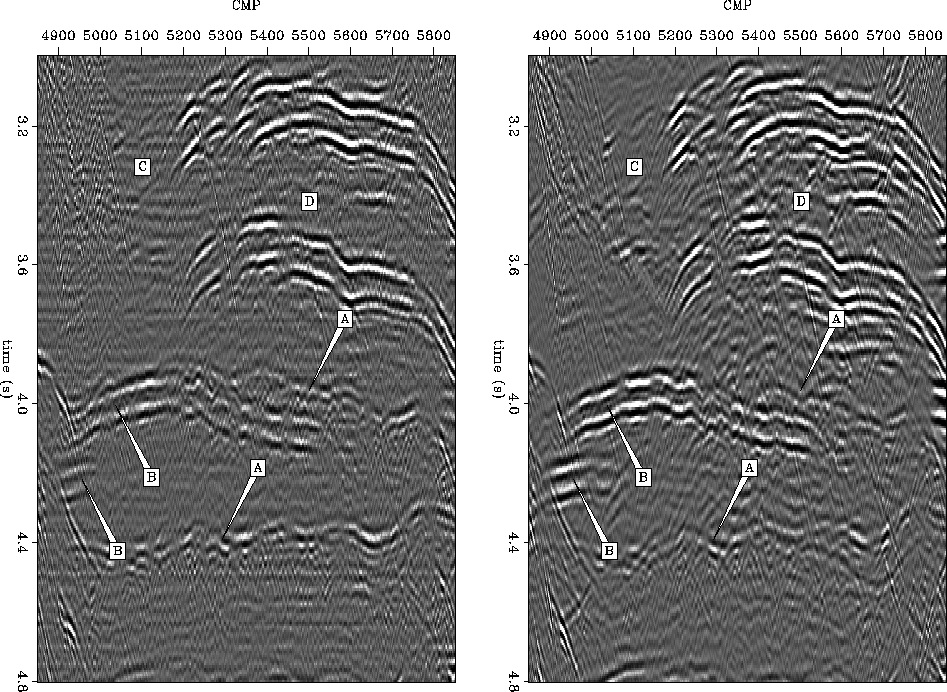




Next: Interpolation with adaptive PEFs
Up: Interpolating the BP synthetic
Previous: Results in the Radon
Figure stacks shows a subsalt portion of a stacked section.
The left panel shows the result of radon demultiple and stack on the decimated data,
the right panel shows the result of simple stack on the interpolated data.
The reason for the difference in flow is that simply stacking the data
which has been dealiased by interpolation
(leaving out the innermost few traces) removes most of the multiple energy,
but doing a similar operation on the decimated data (left panel)
gives a terrible result, because the aliased nature of the multiples
causes them to come through in the stack as a short-period (50ms or so)
series of seafloor multiples that completely obscures the section.
At any rate, the right panel is approximately identical with or without
going to the trouble of radon transform.
Strong multiple events (examples at A) are suppressed more or
less equivalently in the two sections;
arguably somewhat better in the interpolated data.
Some important primaries at B are significantly attenuated
in the decimated data, as shown by comparison with the interpolated data.
Also, throughout the section, most visible in the neighborhood of C,
aliasing results in layer-like artifacts.
Finally, many interesting arrivals, especially diffractions,
in the faulted area around D are strongly attenuated
in the decimated data.
stacks
Figure 22 Portion of unmigrated stacked sections.
The left panel shows decimated data after demultiple and stack, the right panel
shows same data after interpolation, demultiple, and stack.
Multiples (A) are arguably better attenuated in the interpolated data.
The decimated data shows attenuated primary events (B), attenuated
diffractions (D), and layer-like artifacts (C).






Next: Interpolation with adaptive PEFs
Up: Interpolating the BP synthetic
Previous: Results in the Radon
Stanford Exploration Project
1/18/2001
